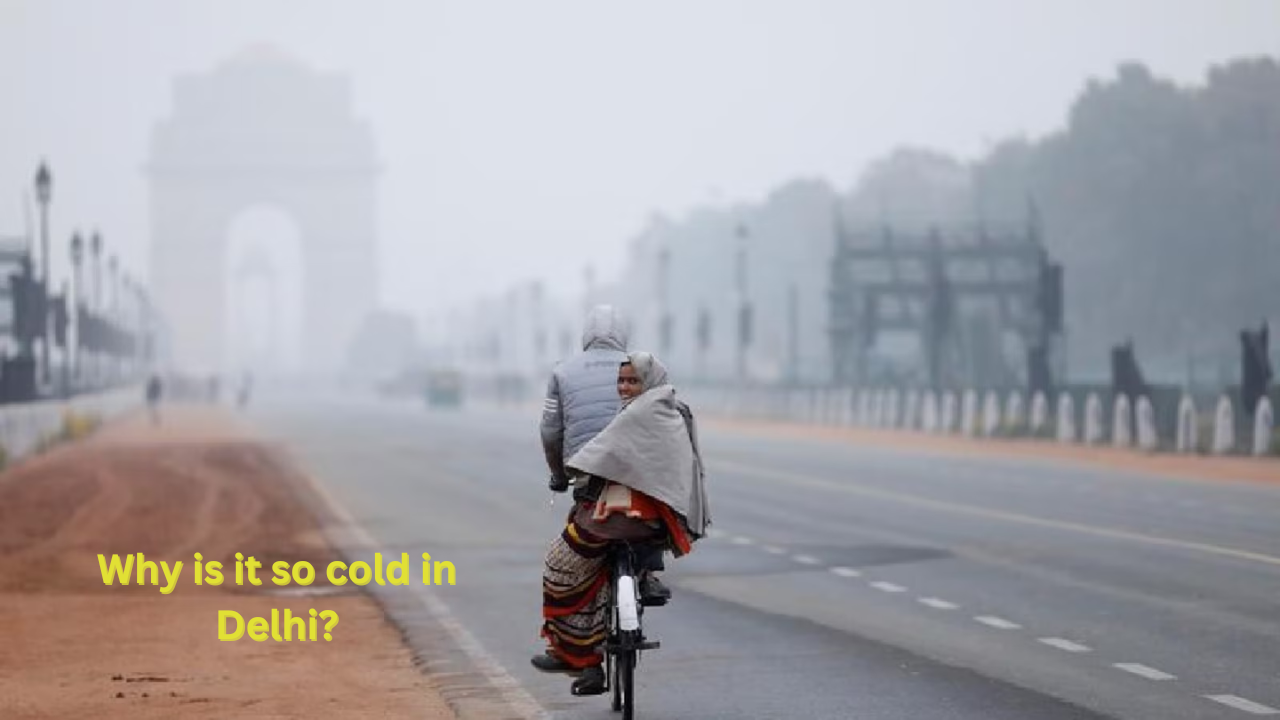Delhi, the bustling heart of India, is famous for its scorching summers and vibrant cultural tapestry. However, as the year bids farewell and December paints the cityscape in hues of winter, a different story unfolds. The air turns crisp, teeth chatter, and hands fumble for gloves – Delhi experiences a bone-chilling cold that often surprises even the seasoned residents.
So, what exactly is brewing in the National Capital Region that sends shivers down spines? Unraveling the reasons behind Delhi’s winter chill requires a peek into the interplay of geography, weather systems, and even a dash of urban sprawl.
Delhi’s Winter Chill: A Tale of Geography, Winds, and Concrete Jungles
- Geography: A Landlocked City at the Foot of the Himalayas
Delhi’s geographic location plays a pivotal role in its winter woes. Nestled in the Indo-Gangetic plains, the city lacks the insulating effect of a coastline. This means cold winds, unimpeded by any barriers, sweep down from the snow-capped Himalayas, bringing with them a dramatic drop in temperatures. Imagine the icy breath of the mountains directly chilling the city!
Unraveling the Mystery of Delhi’s Winter: From Himalayan Breezes to Urban Sprawl
- Western Disturbances: The Winter Warriors
Western Disturbances, those moisture-laden winds originating in the Mediterranean Sea, are like seasonal visitors to Delhi’s winter. While they bring much-needed rain to the northern parts of India, their impact on Delhi’s temperature is more nuanced. As these disturbances pass over the Himalayas, they release their moisture as snow, further intensifying the cold air that descends upon the plains. Think of them as winter warriors, amplifying the chill factor.
- Lack of Sunlight: When Days Turn Short
As winter progresses, the days grow shorter, and the sun’s presence wanes. This limited sunshine translates to less heat being absorbed by the earth, leading to colder nights and mornings. Imagine Delhi basking in fewer hours of sunlight, like a child denied his playtime outdoors.

Beneath the Blanket of Fog: A Deep Dive into Delhi’s Chilling Winters
- Fog and Pollution: A Double Whammy
Delhi’s winter mornings are often painted in a veil of dense fog, a result of high humidity and stagnant air. This fog acts as a blanket, trapping the cold air close to the ground and further suppressing the temperature. Moreover, Delhi’s notorious air pollution, a cocktail of vehicular emissions and industrial smoke, also plays a part. Pollution particles act as tiny insulators, preventing the earth from radiating heat back into the atmosphere, thus perpetuating the cold.
- Urban Sprawl: Concrete Jungle Chills Faster
Delhi’s ever-expanding urban sprawl contributes to the cold as well. Concrete structures absorb less heat than natural landscapes, leading to faster heat loss at night. Imagine a vast expanse of concrete buildings radiating coldness, like giant ice cubes chilling the surrounding air.
Delhi’s Shivering Heart: When Winter Paints the City Blue
The Result: A Chilling Cocktail
These interwoven factors – geography, weather systems, even the city’s own growth – combine to create Delhi’s unique winter experience. The cold winds from the Himalayas, amplified by Western Disturbances, find an easy entry into the landlocked city. The lack of sunshine and the insulating effect of fog and pollution further accentuate the chill. The result? A city that shivers under a blanket of cold, a stark contrast to its usual vibrant persona.
Bone-Chilling Winds and Chai-Warming Smiles: Inside Delhi’s Winter Paradox
Coping with the Chill: Delhiites Rise to the Challenge
While the cold can be daunting, Delhiites are a resilient bunch. They bundle up in layers, indulge in steaming cups of chai, and huddle around bonfires. Street vendors selling roasted peanuts and corn add warmth to the winter air. The spirit of the city remains undimmed, even as temperatures
Climate change is another factor to consider in the context of Delhi’s winters. Rising global temperatures might lead to milder winters in the future, but they could also bring about unpredictable weather patterns, including more intense cold waves. Adapting to these changes and finding sustainable solutions to mitigate the impact of climate change will be crucial for Delhi’s future.
In conclusion,
Delhi’s winter chill is a complex phenomenon woven from the threads of geography, weather systems, and even the city’s own growth. Understanding these factors allows us to appreciate the unique challenges Delhi faces every winter and the resilience of its people in the face of the cold. As we move forward, addressing climate change and finding sustainable solutions will be key to ensuring Delhi’s winters remain bearable and even, perhaps, a little bit charming.
also read : How do you sabotage your own success?
